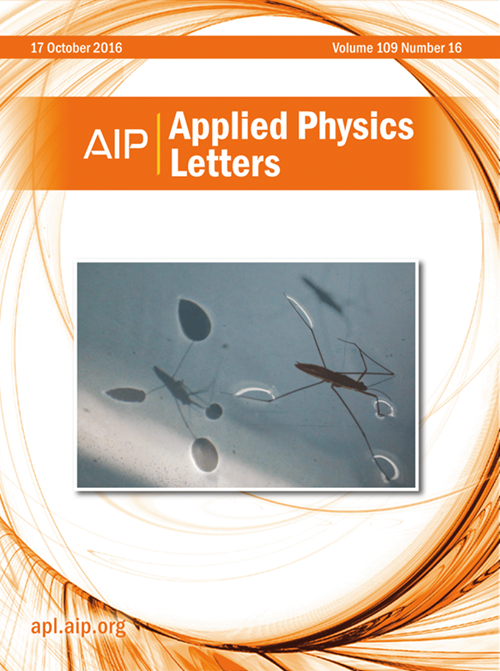基于石墨衬底的MoS2封装FeS2复合材料用于高性能钠离子电池
IF 3.5
2区 物理与天体物理
Q2 PHYSICS, APPLIED
引用次数: 0
摘要
过渡金属硫化物由于具有较高的理论容量和相对较弱的M-S键,是目前公认的有前途的钠离子电池负极材料。然而,tms在循环过程中面临着重大挑战,特别是电子导电性差和严重的体积膨胀,阻碍了它们的实际应用。本研究采用熔盐合成路线,通过高温硫化法制备了FeS2-MoS2 /C多组分复合材料。FeS2-MoS2异质结构显著改善了离子和电子转移,提供了丰富的活性位点。石墨碳层作为FeS2-MoS2的坚固支撑和导电框架,确保有效组分均匀分散。这种独特的结构,结合FeS2和MoS2的异步氧化还原行为,有效地减轻了钠插入/提取过程中的体积膨胀,保持了结构稳定性,提高了电极材料的循环稳定性。FeS2-MoS2 /C复合材料表现出优异的电化学性能,在5000 mA g - 1下循环3000次后,其比容量保持在478.5 mA h g - 1,容量保持率达到97.2%。此外,它还具有优异的速率性能和高温适应性。即使在60°C下,该电极在2 a g−1下循环600次后也能提供515.6 mA h g−1的可逆放电容量。本文章由计算机程序翻译,如有差异,请以英文原文为准。
MoS2 encapsulated FeS2 composite anchored on graphite substrate for high-performance sodium-ion batteries
Transition metal sulfides (TMSs) are currently recognized as promising anode materials for sodium-ion batteries owing to their high theoretical capacities and relatively weak M–S bonds. However, TMSs face significant challenges during cycling, particularly poor electronic conductivity and severe volume expansion, impeding their practical applications. In this study, FeS2–MoS2/C multicomponent composite materials are synthesized through a molten salt synthesis route, followed by high-temperature sulfurization. The FeS2–MoS2 heterostructure significantly improves both ion and electron transfer, offering a wealth of active sites. The graphite carbon layer acts as a robust support and conductive framework for FeS2–MoS2, ensuring uniform dispersion of active components. This unique architecture, combined with the asynchronous redox behavior of FeS2 and MoS2, effectively mitigates volume expansion during sodium insertion/extraction, maintaining structural stability and improving the cycling stability of the electrode material. The FeS2–MoS2/C composite exhibits exceptional electrochemical performance, achieving a sustained specific capacity of 478.5 mA h g−1 after 3000 cycles at 5000 mA g−1, with an impressive capacity retention rate of 97.2%. Additionally, it demonstrates excellent rate capability and high-temperature adaptability. Even at 60 °C, the electrode delivers a reversible discharge capacity of 515.6 mA h g−1 after 600 cycles at 2 A g−1.
求助全文
通过发布文献求助,成功后即可免费获取论文全文。
去求助
来源期刊

Applied Physics Letters
物理-物理:应用
CiteScore
6.40
自引率
10.00%
发文量
1821
审稿时长
1.6 months
期刊介绍:
Applied Physics Letters (APL) features concise, up-to-date reports on significant new findings in applied physics. Emphasizing rapid dissemination of key data and new physical insights, APL offers prompt publication of new experimental and theoretical papers reporting applications of physics phenomena to all branches of science, engineering, and modern technology.
In addition to regular articles, the journal also publishes invited Fast Track, Perspectives, and in-depth Editorials which report on cutting-edge areas in applied physics.
APL Perspectives are forward-looking invited letters which highlight recent developments or discoveries. Emphasis is placed on very recent developments, potentially disruptive technologies, open questions and possible solutions. They also include a mini-roadmap detailing where the community should direct efforts in order for the phenomena to be viable for application and the challenges associated with meeting that performance threshold. Perspectives are characterized by personal viewpoints and opinions of recognized experts in the field.
Fast Track articles are invited original research articles that report results that are particularly novel and important or provide a significant advancement in an emerging field. Because of the urgency and scientific importance of the work, the peer review process is accelerated. If, during the review process, it becomes apparent that the paper does not meet the Fast Track criterion, it is returned to a normal track.
 求助内容:
求助内容: 应助结果提醒方式:
应助结果提醒方式:


